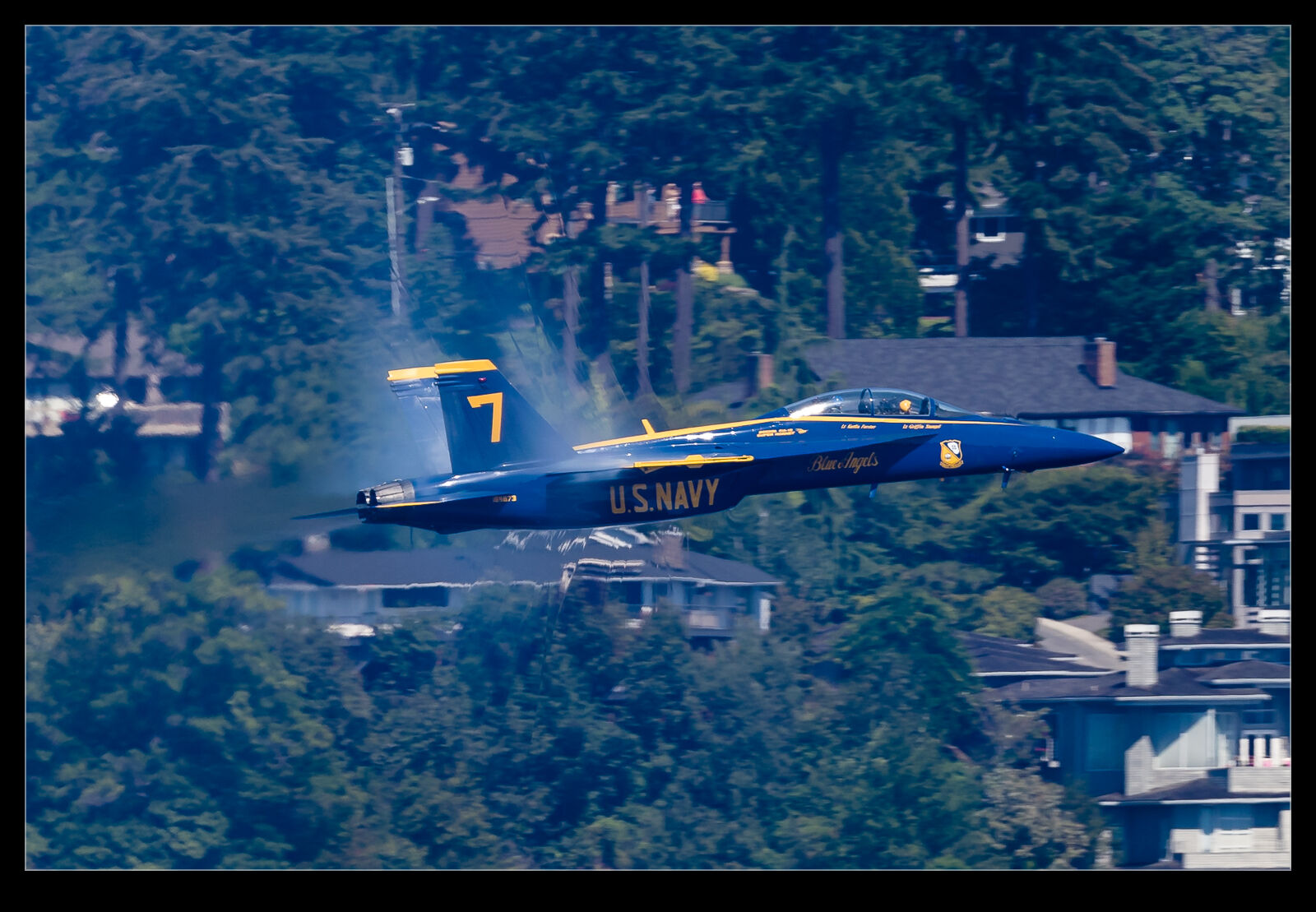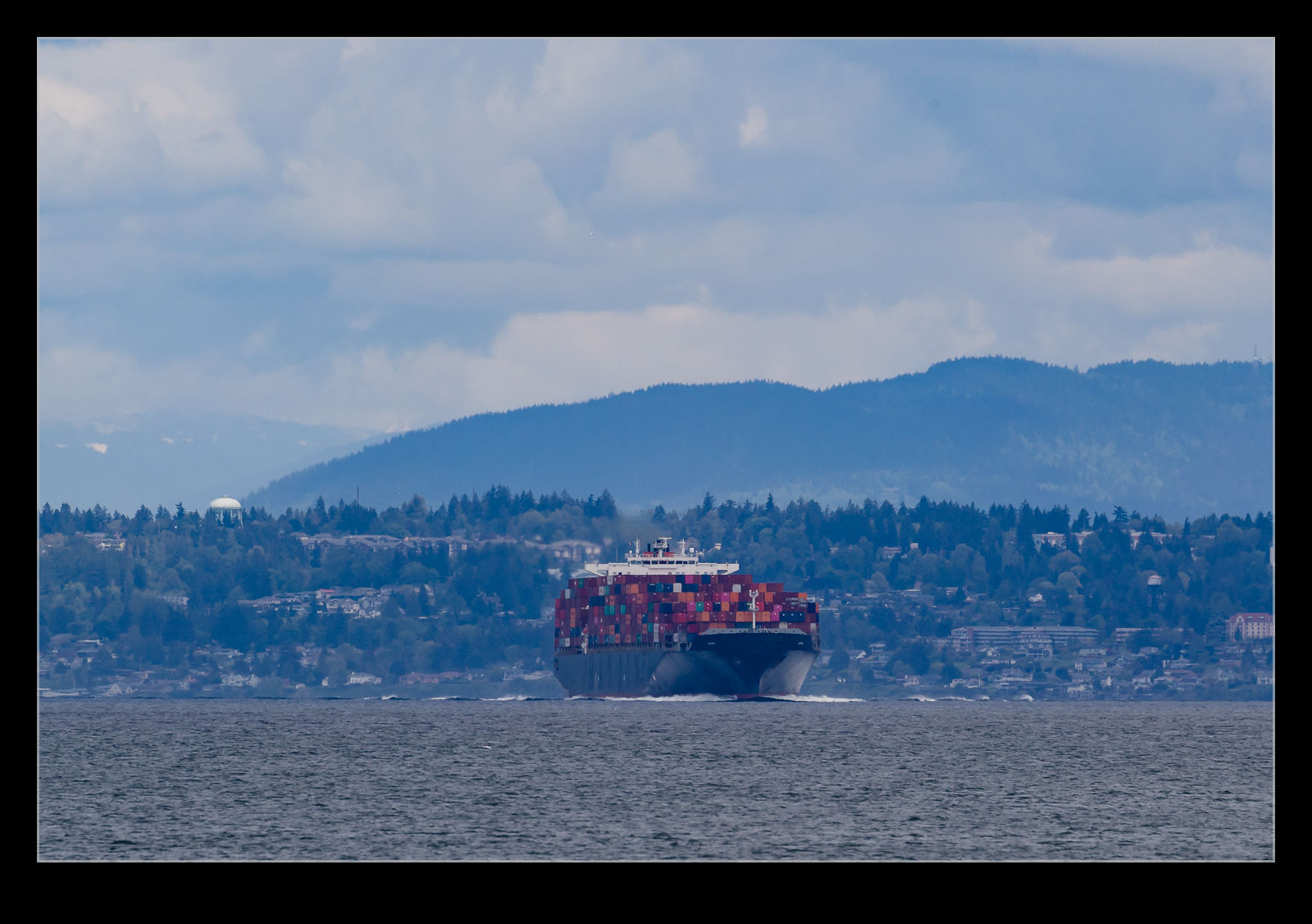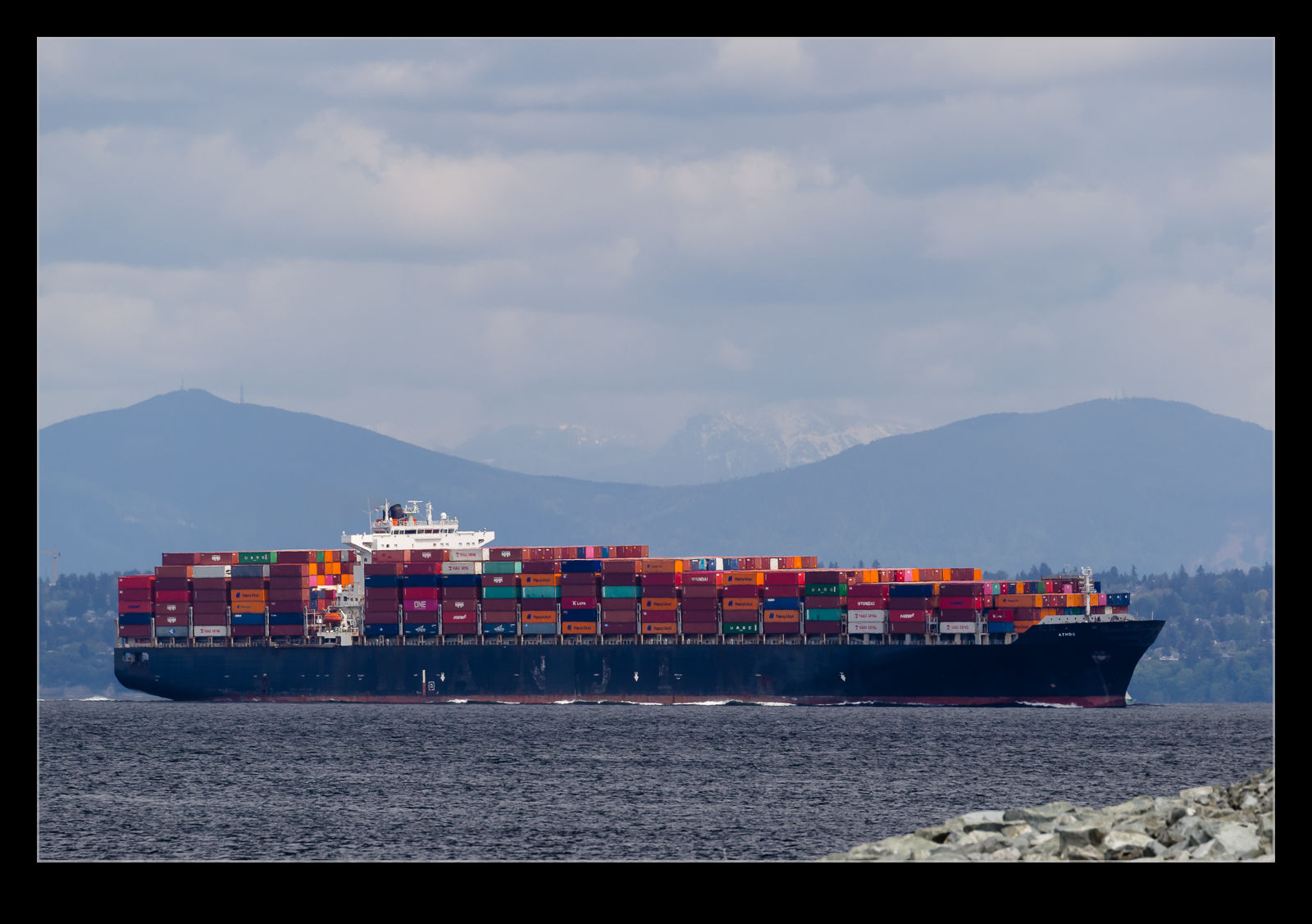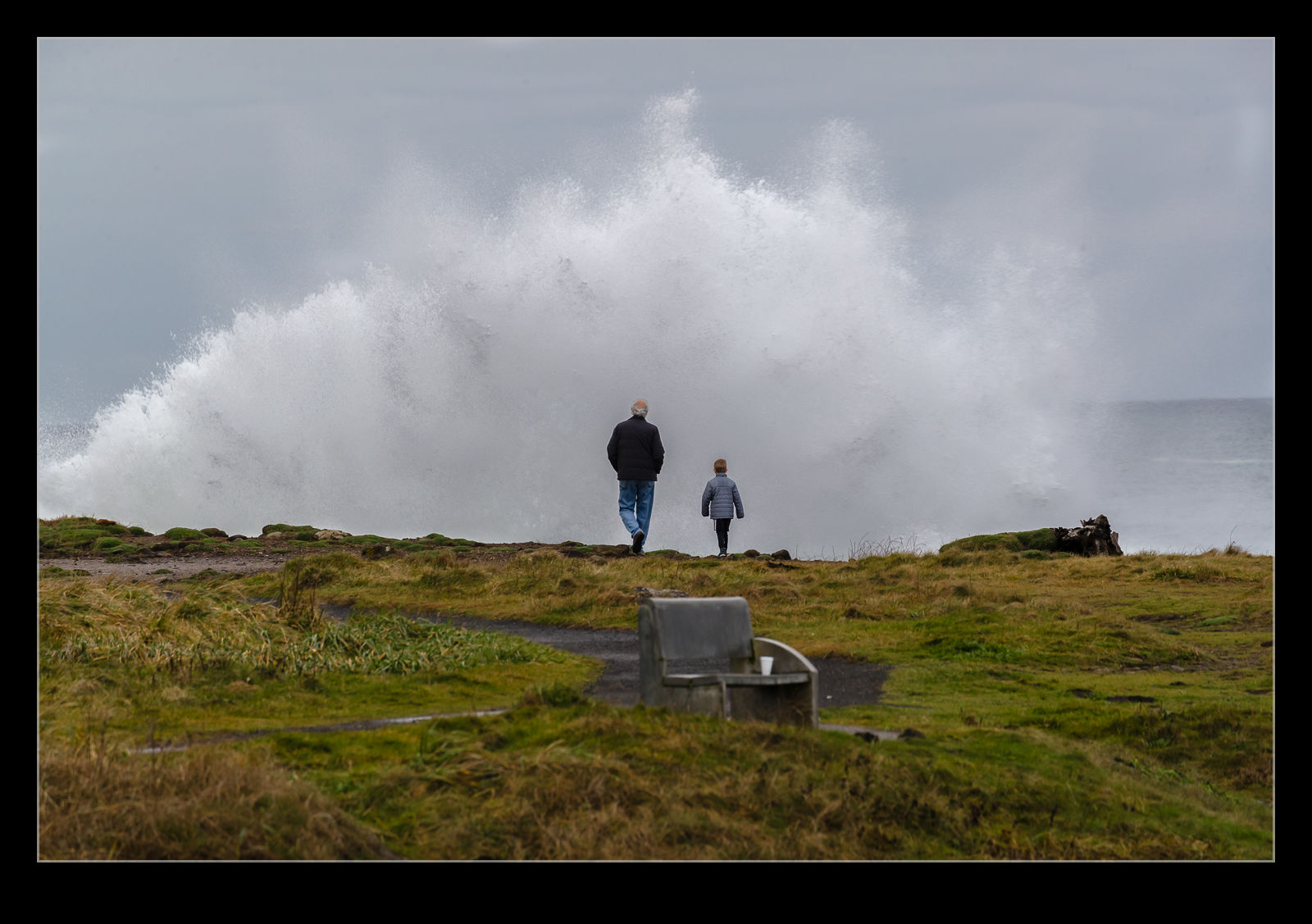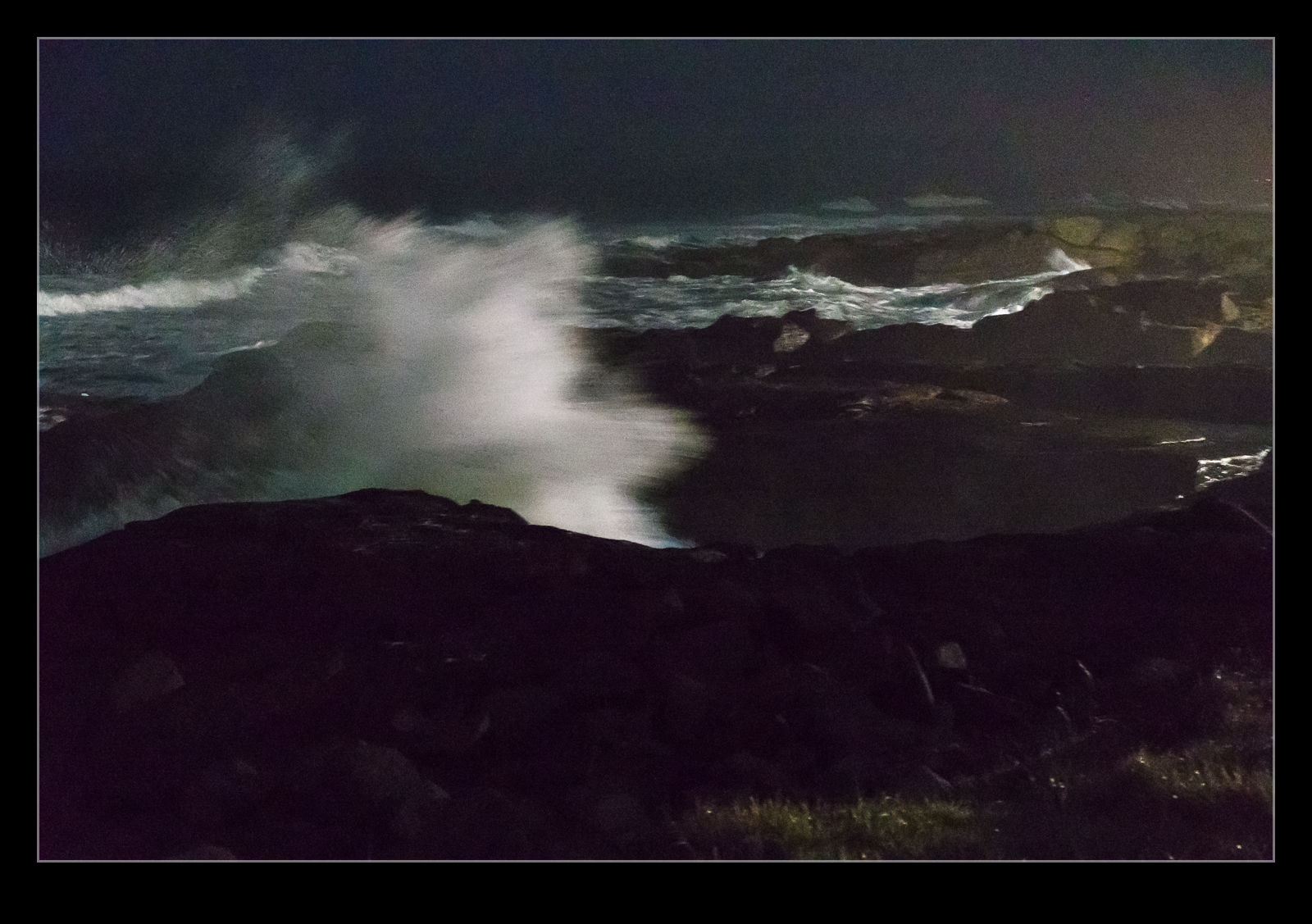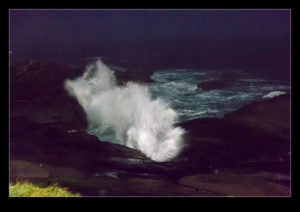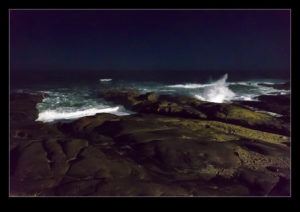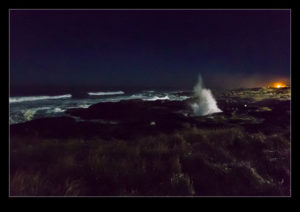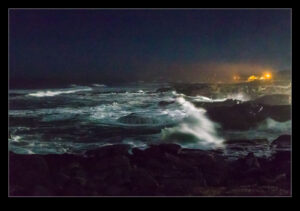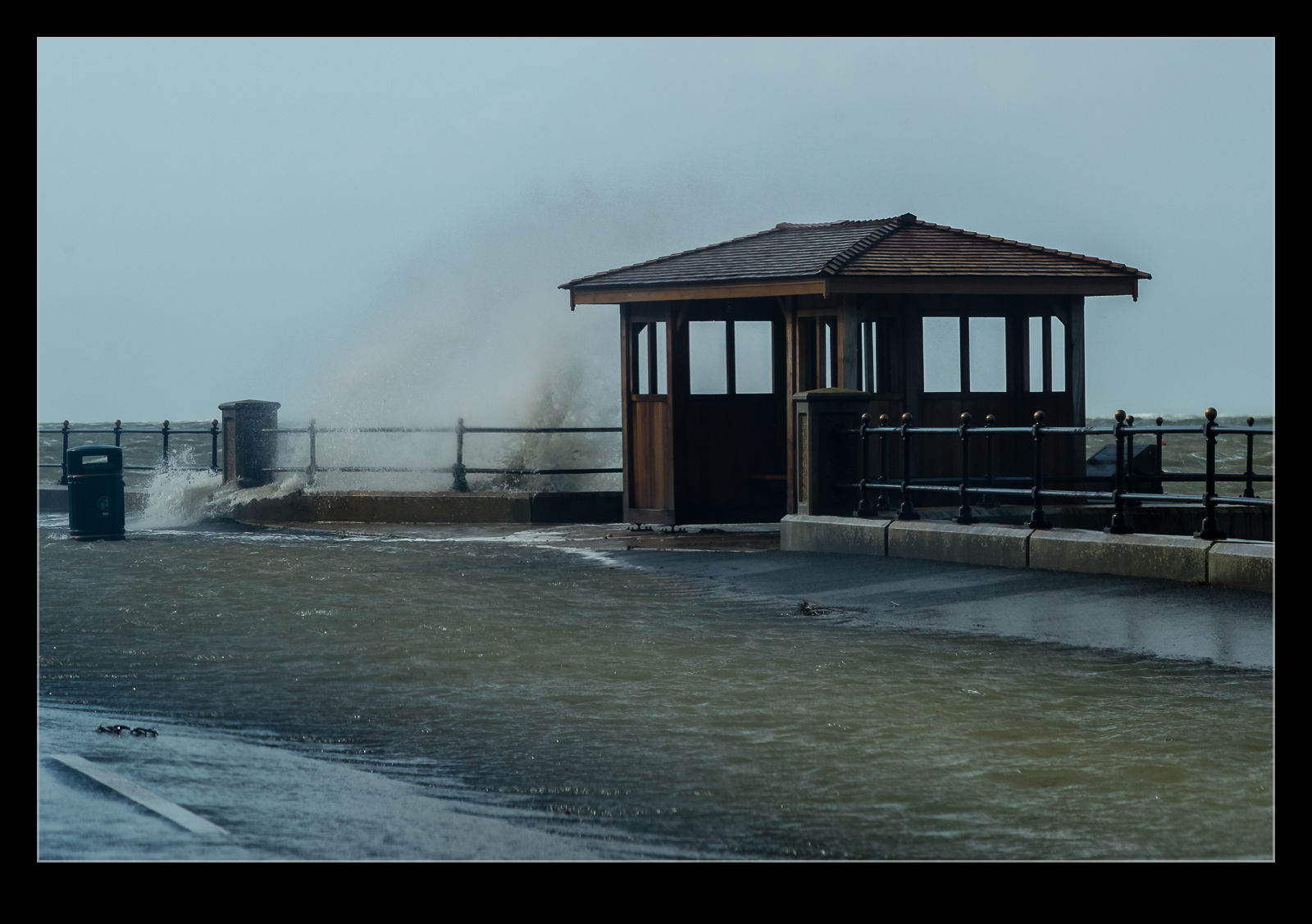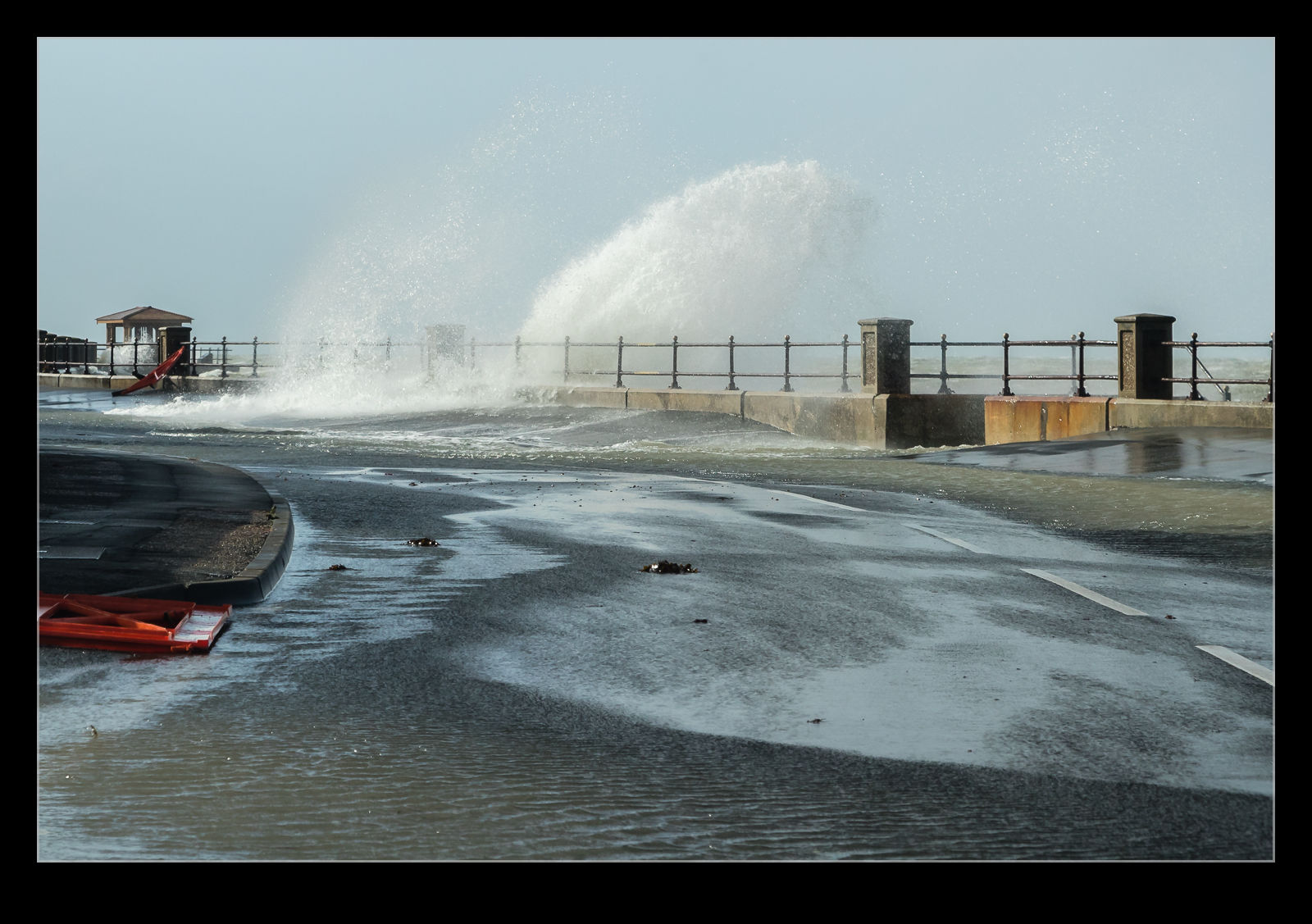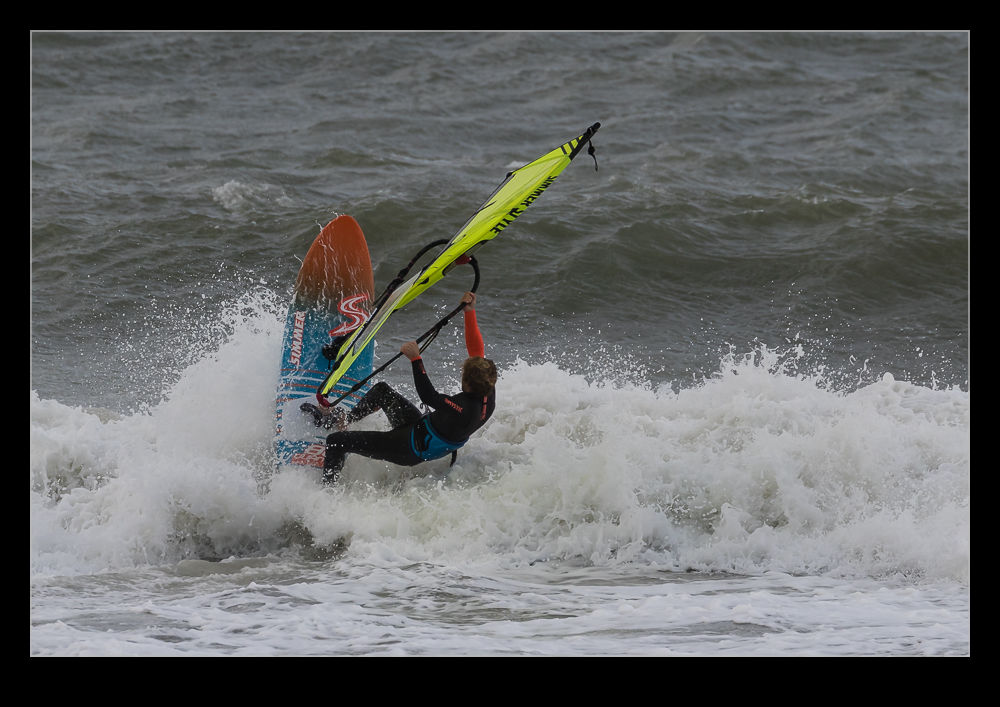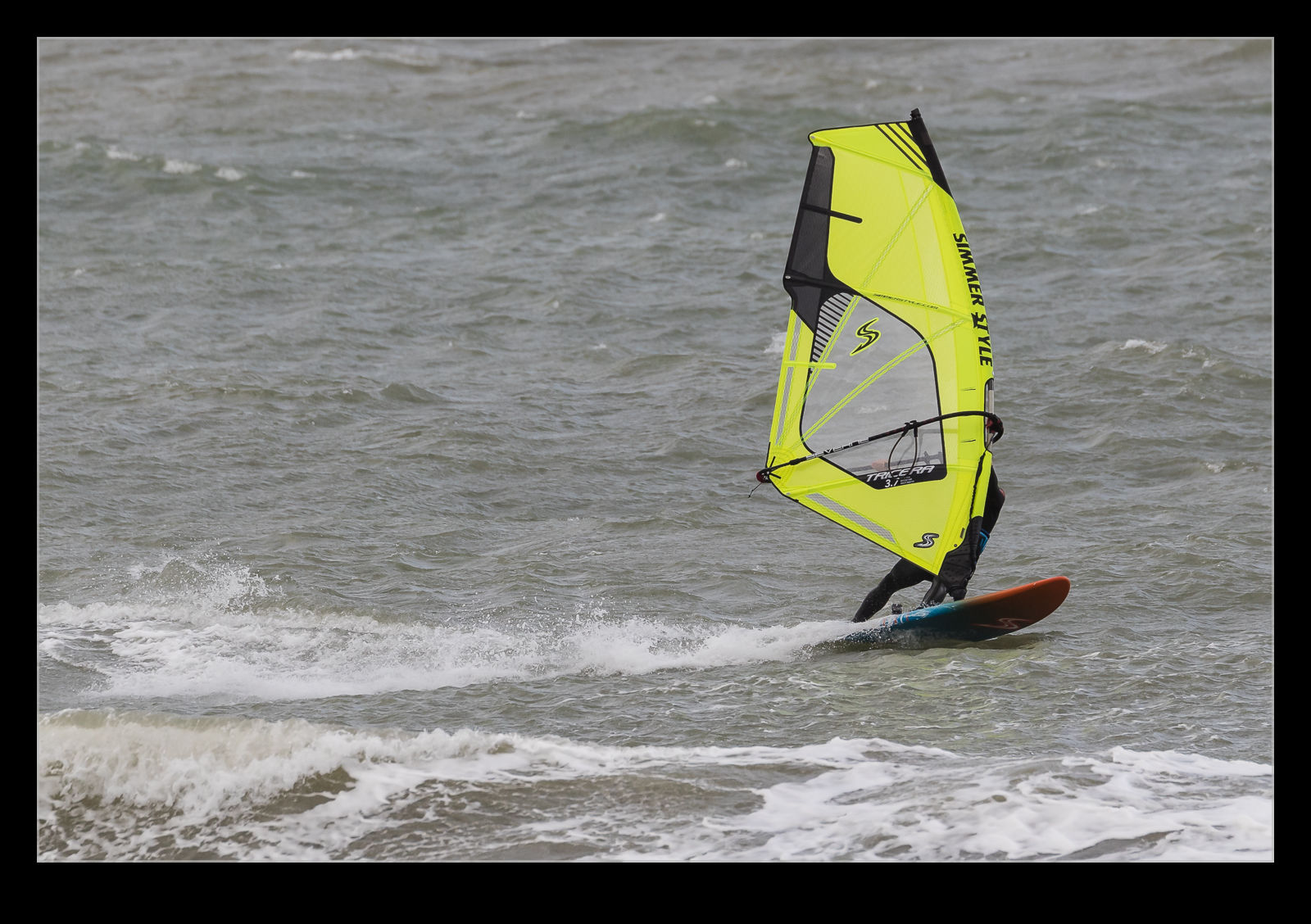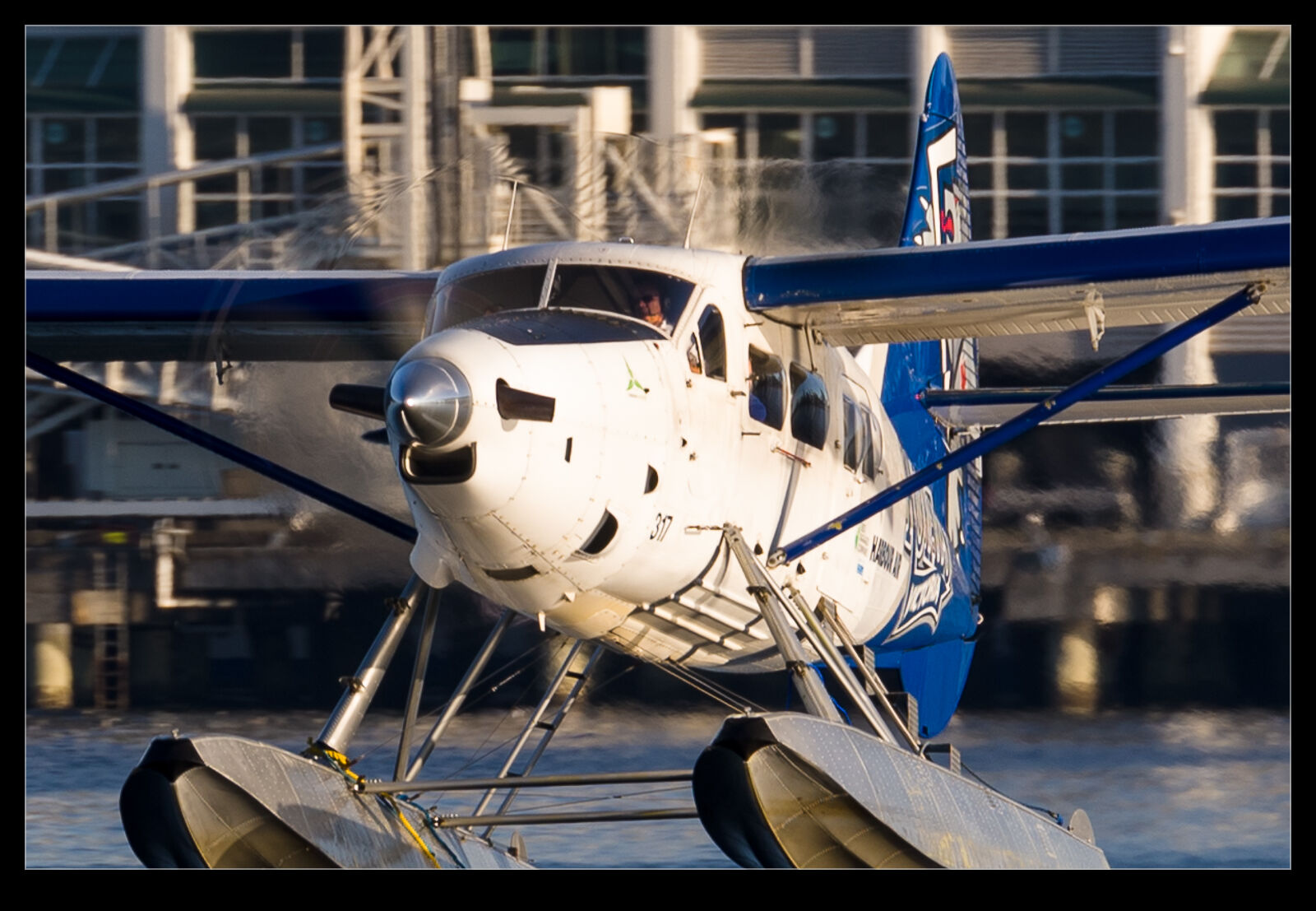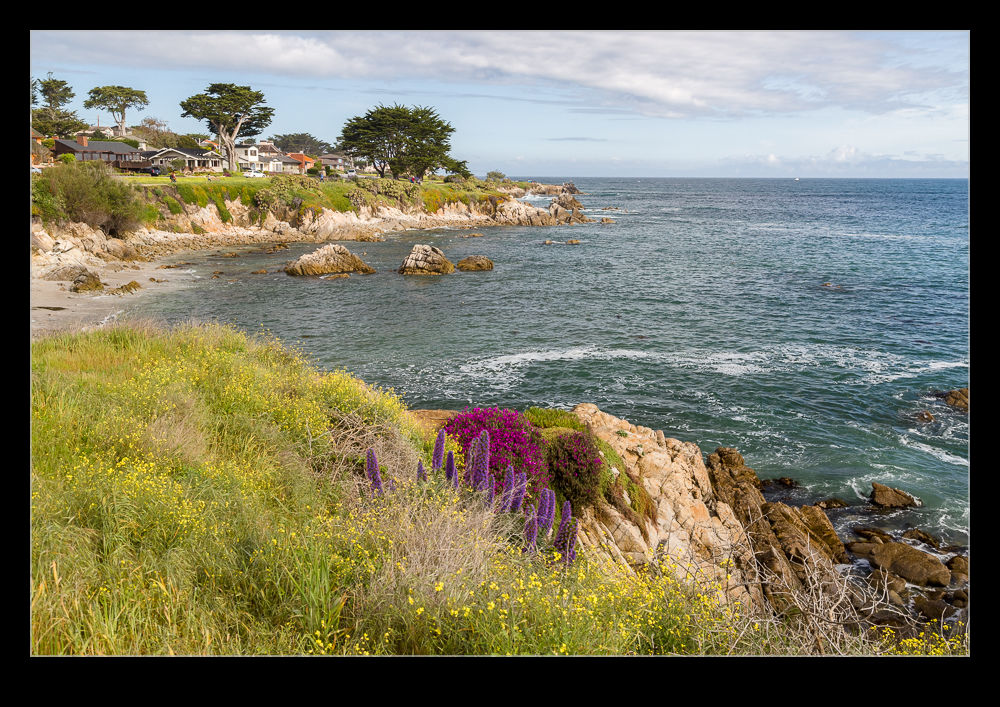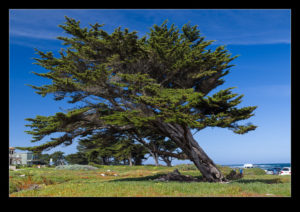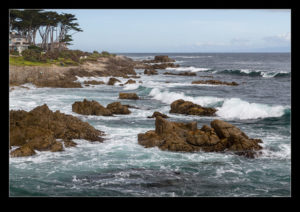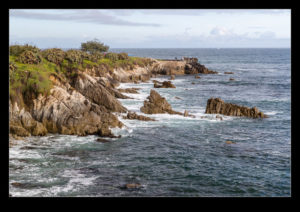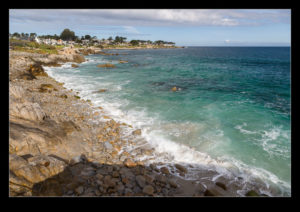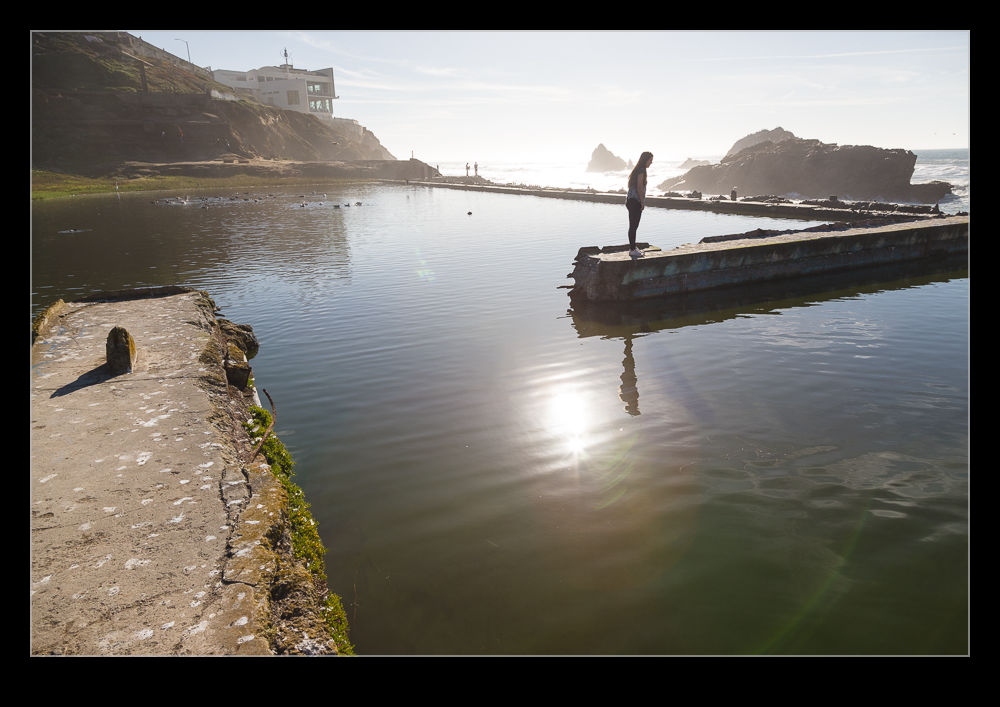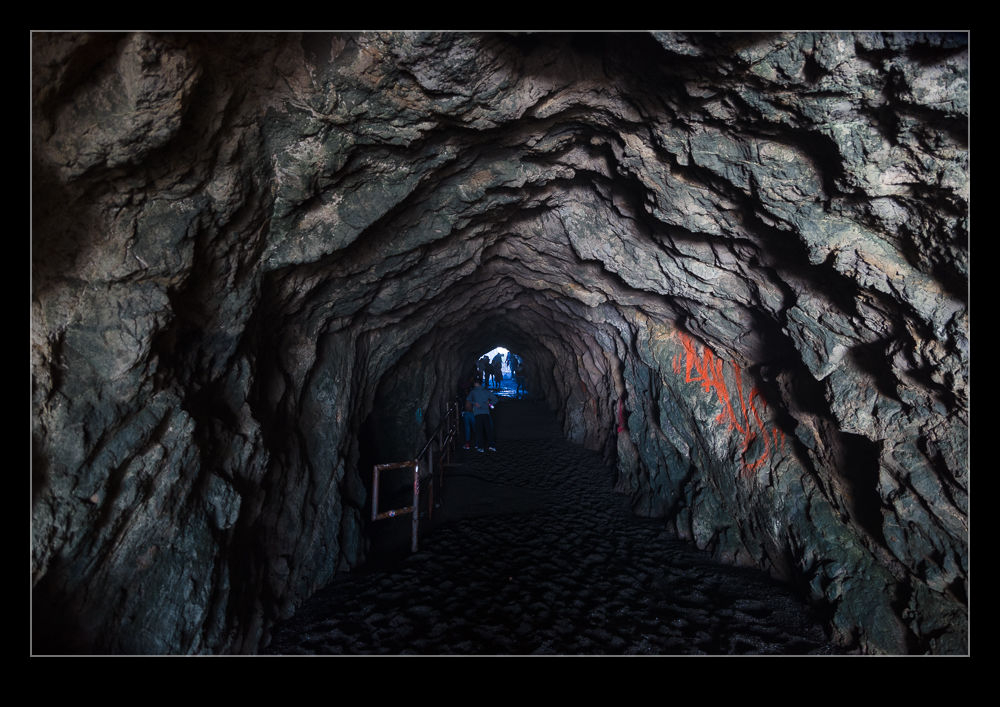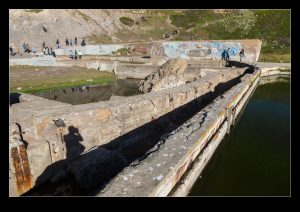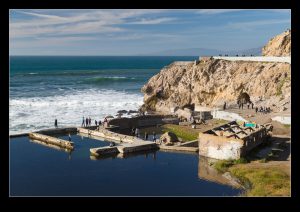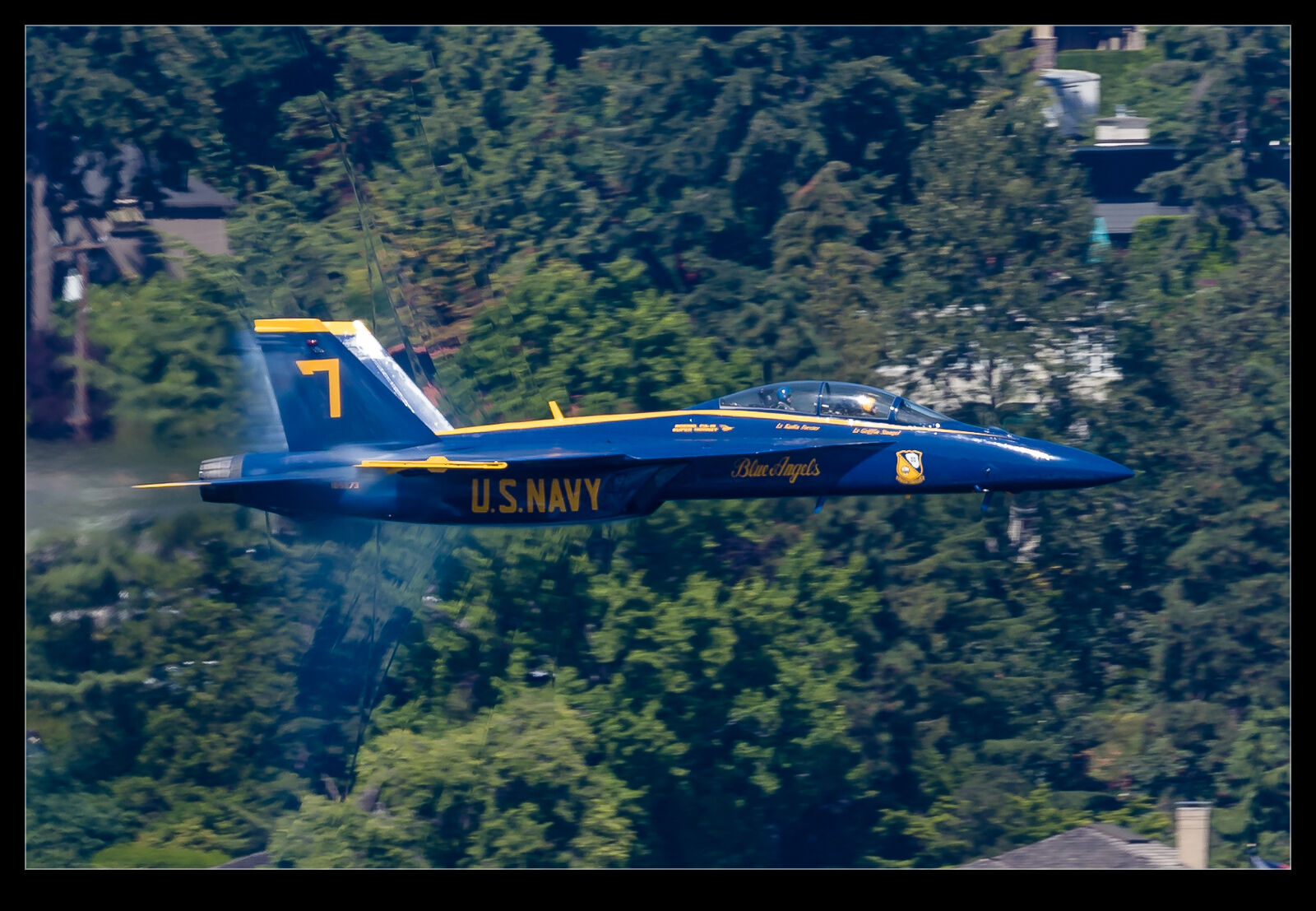 One of the highlights of the Blue Angels’ display is the sneak passes. The display is good but the sneak pass gets the jets as fast as you are going to get in their routine and there is a chance of vapor cones forming around the shocks and expansion fans. A display over water enhances the chance of the vapor. The distance of the display line on Lake Washington was a little disappointing as the jets were quite far away but the advantage of this location was that Mercer Island provided a backdrop.
One of the highlights of the Blue Angels’ display is the sneak passes. The display is good but the sneak pass gets the jets as fast as you are going to get in their routine and there is a chance of vapor cones forming around the shocks and expansion fans. A display over water enhances the chance of the vapor. The distance of the display line on Lake Washington was a little disappointing as the jets were quite far away but the advantage of this location was that Mercer Island provided a backdrop.
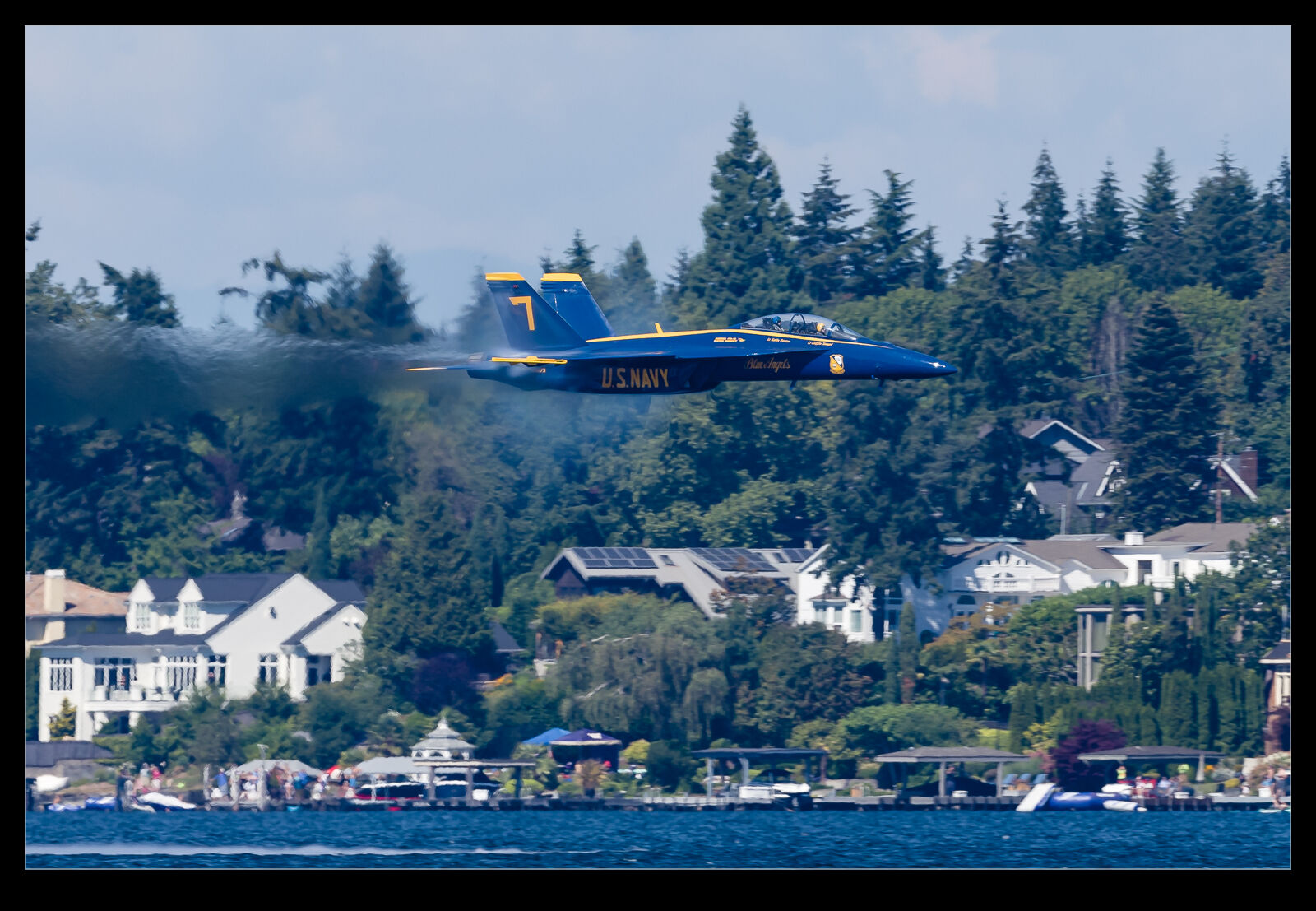 The benefit of this backdrop was that, the rapid changes in density of the air in the shocks and expansions makes the refractive index change and this will distort the view of the background. With a clear sky, this is usually not visible but, with a background, you can see the shocks around the airframe. This is a rare opportunity. Fortunately, while there was little vapor, there were plenty of shocks. I was quite happy when I got home and studied the shots of the display to find I had some good results. It would have been great to have been on the media boat but let’s not complain.
The benefit of this backdrop was that, the rapid changes in density of the air in the shocks and expansions makes the refractive index change and this will distort the view of the background. With a clear sky, this is usually not visible but, with a background, you can see the shocks around the airframe. This is a rare opportunity. Fortunately, while there was little vapor, there were plenty of shocks. I was quite happy when I got home and studied the shots of the display to find I had some good results. It would have been great to have been on the media boat but let’s not complain.
